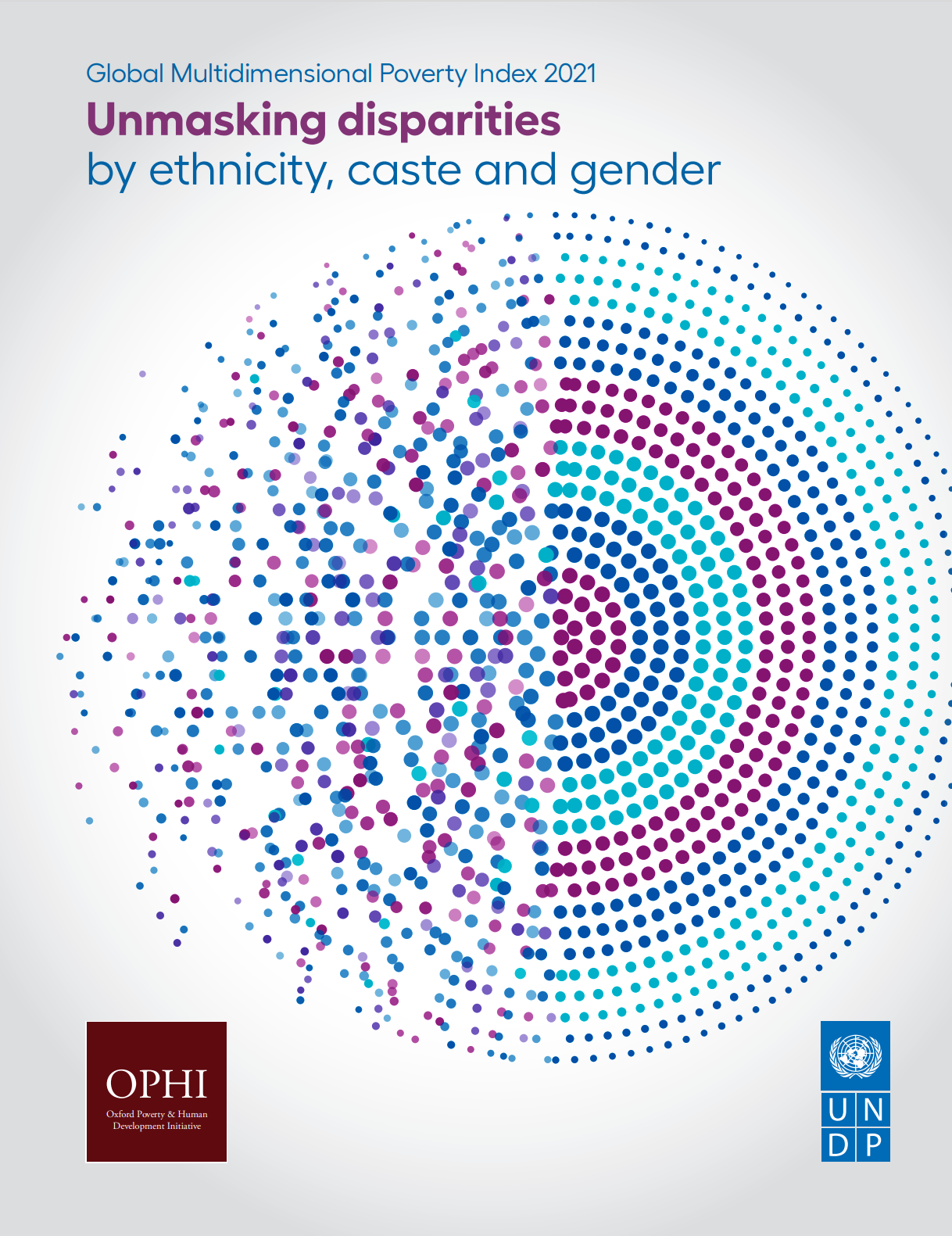Global MPI 2021
The global Multidimensional Poverty Index 2021 compares acute multidimensional poverty for 109 countries in developing regions. These countries are home to 5.9 billion people, three-quarters of the world’s population. Of these people, 1.3 billion (21.7%) are identified by the 2021 global MPI as multidimensionally poor. The global MPI 2021 also includes results for three points in time for 28 of the 84 countries with harmonised estimates.
Our joint report
This year’s report, Global Multidimensional Poverty Index 2021: Unmasking disparities by ethnicity, caste and gender, produced in partnership with the United Nations Development Programme Human Development Report Office (UNDP HDRO), examines inequalities along the lines of ethnicity, case and gender across multidimensionally poor people globally. These disparities are likely to have been further exacerbated by the COVID-19 pandemic. Using the data that are available, the report presents for the first time disaggregations by the gender of the household head for 108 countries, and by ethnicity or race or caste for 41 countries. The analysis aims to highlight groups that are being left behind and show which interlinked deprivations hinder progress in poverty reduction, so that the global community can act effectively.
- Provide estimates on multidimensional poverty for 109 developing countries (with data from surveys ranging 2009–2019/2020);
- Include trends over time for 80 countries, for a range of periods between 2000–2019/2020;
- Present multidimensional poverty estimates disaggregated by ethnicity and caste for 41 countries to identify who is – and how people are – being left behind;
- Explore intrahousehold analysis with a gender lens;
- Reveal how multidimensional poverty could amplify the impacts of COVID-19 shocks, hurting education, employment and livelihood.
Citation: OPHI (Oxford Poverty and Human Development Initiative) and UNDP (United Nations Development Programme) (2021). Global Multidimensional Poverty Index 2021: Unmasking disparities by ethnicity, caste and gender. United Nations Development Programme and Oxford Poverty and Human Development Initiative.
Our data
The global MPI results are presented in Data Tables 1–8. These results use the most recent data from 109 countries, covering 5.9 billion people, and including trends over time in 84 countries. The results include disaggregation by age groups, rural/urban areas, and subnational regions. A new element in this 2021 round is that we have disaggregated by gender of household head (female and male) and present results for three points in time for 28 of the 84 countries with harmonised estimates. As a measure of robustness, we also publish results for multiple poverty-cutoffs. Finally, auxiliary statistics such as standard errors and sample sizes are part of these data tables.
The special ethnicity tables produced for the global MPI 2021 report can be downloaded here.
Oxford Academic Licence
Our Country Briefings
The global MPI Country Briefings present the country-specific results for the countries in this year’s global MPI.
Documentation
Technical files
Our current margin estimates for 109 countries are based on the most accurate data possible using indicator definitions constructed using the available data. We also estimate trends over time for 84 of these 109 countries. 28 of these countries have trends for three points in time, while it is two points in time for 56 countries. Our harmonised over time estimates are based on indicator definitions that are harmonised for comparability over time. We standardised and harmonised indicators across 221 survey data sets to produce the results for global MPI 2021. 196 of these data sets have standardised and harmonised indicators that were used to produce the current margin estimates and the harmonised over time estimates. 25 data sets have only standardised indicators that gives the current margin estimates. More information on survey details are available in Methodological Note 51.
The technical files (or Stata do-files) for each country can be downloaded here.
Multimedia
OPHI gratefully acknowledges support from the Swedish International Development Cooperation Agency (Sida) for the update and further analysis of the global MPI and from the Canadian Government’s Department of Foreign Affairs, Trade and Development for the gendered analysis of the global MPI.



